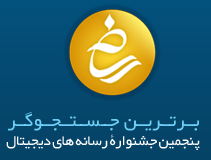عنوان
پدید آورنده
موضوع
رده
کتابخانه
محل استقرار
شماره کتابشناسی ملی
شماره
TL8f18p61p
زبان اثر
زبان متن نوشتاري يا گفتاري و مانند آن
انگلیسی
عنوان و نام پديدآور
عنوان اصلي
Improving Biological Object Classification in Plankton Images Using Convolutional Neural Networks, Geometric Features, and Context Metadata
نام عام مواد
[Thesis]
نام نخستين پديدآور
Ellen, Jeffrey Scott
نام ساير پديدآوران
Elkan, CharlesOhman, Mark D
وضعیت نشر و پخش و غیره
تاریخ نشرو بخش و غیره
2018
یادداشتهای مربوط به پایان نامه ها
کسي که مدرک را اعطا کرده
Elkan, CharlesOhman, Mark D
امتياز متن
2018
یادداشتهای مربوط به خلاصه یا چکیده
متن يادداشت
For the past few years, Convolutional Neural Networks have had tremendous impact not only within the field of Computer Science but by 2018 their rapid proliferation in free publically available tools has not only thoroughly permeating all aspects of data science, signal processing, and cybersecurity but had an impact on most human endeavors including entertainment, finance, transportation, agriculture, and medicine to name a few. In this dissertation I utilize CNNs specifically to achieve better classification of zooplankton in scientific images, but I also use the zooplankton images to better understand CNNs, as a benchmark to quantify the performance benefit CNNs provide over the previous state of the art, and as raw material to inspire my own contribution to the growing body of knowledge regarding CNNs. The performance benefit I achieve through utilizing contextual metadata with pixel images may no longer be novel, but it provides a concrete benefit, leverages the past body of work, and is likely applicable to numerous other application areas. Before tackling any specifics, I provide a comprehensive overview of historical and contemporary feature extraction techniques that are particularly applicable to biological object classification in images. This includes a literature review and categorizes previous feature extraction techniques into three different categories: statistical analysis methods, topology based methods, and point/patch correspondence methods. We then baselined existing performance with non-CNN approaches, and considerations as to how they could be made more efficient. It also quantified the number of expertly labeled images required, and which algorithms worked best (in our case SVM and Gradient Boosted Random Forest, also Multi-layer perceptron). Some minor points were investigating whether or not abstaining provided any meaningful gain, and whether or not size fractionation improved performance (no, but significantly increased speed at a minimal performance cost), and whether ensembling two diverse approaches resulted in better performance than either individually (maybe, but only a small amount) Next, we use convolutional neural networks (CNNs) on various types of images, including plankton, looking for clues useful when training models from scratch. This publication identifies a correlation between the statistical distribution of the weights of filters in a fully trained network with the overall accuracy of that network. The implication is that given multiple instances of trained networks, it may be possible to predict future performance. Detouring from machine learning experimentation, I cover some additional image processing work I completed in order to more cleanly segment objects in images obtained by our Zooglider. Finally, we combine all of these contributions to improve plankton image classification: we utilize CNNs on segmented image tiles of plankton images. We also tested the hypothesis that the previously used geometric features, as well as Geotemporal and hydgrographic metadata would improve performance beyond using pixel data by itself. Evidence strongly supports the intuition that context does help identify the image contents. We evaluated both trivial and novel strategies to incorporate this data into the CNN framework, and found one of our novel strategies significantly outperformed all others.
نام شخص به منزله سر شناسه - (مسئولیت معنوی درجه اول )
مستند نام اشخاص تاييد نشده
Goldstein, Elizabeth Wayne
نام شخص - ( مسئولیت معنوی درجه دوم )
مستند نام اشخاص تاييد نشده
Ellen, Jeffrey Scott
شناسه افزوده (تنالگان)
مستند نام تنالگان تاييد نشده
UC San Diego
دسترسی و محل الکترونیکی
نام الکترونيکي
 مطالعه متن کتاب
مطالعه متن کتاب وضعیت انتشار
فرمت انتشار
p
اطلاعات رکورد کتابشناسی
نوع ماده
[Thesis]
کد کاربرگه
276903
اطلاعات دسترسی رکورد
سطح دسترسي
a
تكميل شده
Y
